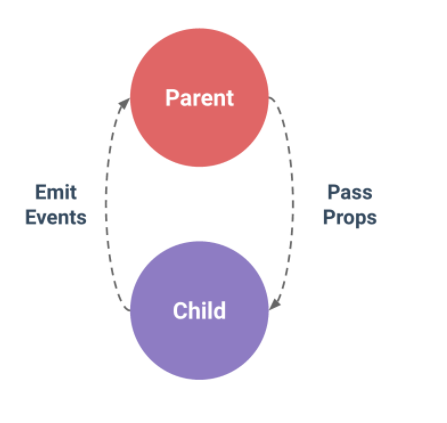Vue 路由组件
组件数据局部化处理
- 不管页面组件还是小组件,都可能会被多次复用
- 复用组件的原因,其实就是复用组件的 页面结构、页面样式、页面逻辑
- 但是页面上的数据需要区分(被复用的两个组件数据多少是有区别的),所以组件的数据要做局部化处理
- 借助函数可以产生局部作用域的特点,为每一次复用组件产生一个独立的作用域
语法:
data () {return {// 数据们}}
子组件
<template><div class="beat" @click="count += 1">{{ count }}下</div></template><script>export default {name: "Beat",// 不管是页面组件还是小组件,都可能被复用,页面结构与样式都可以采用一套,但是数据一定要相互独立data () {return {count: 0}}}</script><style scoped>.beat {width: 100px;height: 100px;background-color: orange;text-align: center;line-height: 100px;border-radius: 50%;}</style>
父组件
<template><div class="home"><Beat/><Beat/></div></template><script>import Beat from '@/components/Beat'export default {components: {Beat,}}</script>
路由逻辑跳转
- 很多时候,我们需要通过普通按钮的逻辑,或是直接在某些逻辑中完成页面的跳转
- 可以通过在逻辑中用 this.$router.push() 来完成前往目标页,两种语法如下
- this.$router.push('路劲')
- this.$router.push({name: '路由名'})
- 在做移动端项目时,没有像浏览器那样的前进后台键,页可以用 this.$router.go() 来完成前进后退,语法如下
- 前进后退:this.$router.go(正负整数),正式代表前进,负数代表后台,数值就是步长
案例:
<template><div class="home"><Nav/><h1>主页</h1><button @click="goPage('/first')">前往第一页</button>|<button @click="goPage('/second')">前往第二页</button>|<button @click="goBack(-1)">后退一页</button>|<button @click="goBack(-2)">后退二页</button>|<button @click="goBack(1)">前进一页</button></div></template><script>import Nav from '@/components/Nav'export default {methods: {goPage(path) {// 可以通过 this.$router 完成逻辑跳转this.$router.push();},goBack(num) {// 一般在移动端项目上运用this.$router.go(num);}},components: {Nav,}}</script>
组件传参
父传子

在子组件内通过 props 设置组件的自定义属性
props: ['abc', 'goods']在父组件渲染子组件时对自定义属性赋值即可
<GoodsBox v-for="goods in goods_list" :abc="goods" :goods="goods"/>子组件
<template><div class="goods-box"><img :src="goods.img" alt=""><p>{{ goods.title }}</p></div></template><script>export default {name: "GoodsBox",// 在组件内部通过props定义组件的自定义属性props: ['abc', 'goods'],}</script><style scoped>.goods-box {width: 260px;height: 300px;border: 1px solid black;border-radius: 5px;margin: 20px;float: left;overflow: hidden;text-align: center;}img {width: 260px;height: 260px;}</style>父组件
<template><div class="goods"><div class="main"><!-- 在使用子组件时对自定义属性赋值即可 --><GoodsBox v-for="goods in goods_list" :key="goods" :goods="goods" /></div></div></template><script>import GoodsBox from "../components/GoodsBox";let goods_list = [{img: require('@/assets/img/001.jpg'),title: '小猫',},{img: require('@/assets/img/002.jpg'),title: '小猫儿',},{img: require('@/assets/img/003.jpg'),title: '小狗',},{img: require('@/assets/img/004.jpg'),title: '小狗儿',},];export default {name: "Goods",data () {return {goods_list,}},components: {GoodsBox,},}</script>{img: require('@/assets/img/1.jpeg'),title: '1号',},{img: require('@/assets/img/2.jpeg'),title: '2号',},{img: require('@/assets/img/3.jpg'),title: '3号',},{img: require('@/assets/img/4.jpeg'),title: '4号',},
子传父
前提:子组件是被父组件渲染的,所以子组件渲染要晚于父组件
子组件一定要满足一个条件,才能对父组件进行传参(某个时间节点 === 某个被激活的方法)
- 子组件刚刚加载成功,给父组件传参
- 子组件某一个按钮被点击的时刻,给父组件传参 iii)子组件要被销毁了,给父组件传参
在子组件满足条件激活子组件的方法中,对父组件发生一个通知,并将数据携带处理(自定义组件事件)
<div class="goods-box" @click="boxClick"></div>methods: {boxClick () { this.$emit('receiveData', this.goods.title, '第二个数据', '第三个数据') }}在父组件渲染子组件时,为自定义事件绑定方法
<GoodsBox @receiveData="recFn"/>在父组件实现绑定方法时,就可以拿到子组件传参的内容(接收到了通知并在父组件中相应)
recFn(title, data2, data3) {console.log('接收到了' + title);}组件标签不能绑定系统定义的事件,没有意义,子组件的事件都是在自己内部完成
子组件
<template><div class="goods-box" @click="boxClick"><img :src="goods.img" alt=""><p>{{ goods.title }}</p></div></template><script>export default {props: ['abc', 'goods'],methods: {boxClick () {// 通知父级 - 自定义组件的事件this.$emit('receiveData', this.goods.title)}}}</script>父组件
<template><div class="goods"><div class="main"><!-- 实现自定义事件,接收子组件通知的参数 --><GoodsBox v-for="goods in goods_list" @receiveData="recFn"/></div></div></template><script>import GoodsBox from "../components/GoodsBox";export default {name: "Goods",data () {return {goodsTitle: '哪个',}},methods: {recFn(title) {console.log('接收到了' + title);this.goodsTitle = title;}},components: {GoodsBox,},}</script>
组件的生命周期钩子
组件的生命周期:一个组件从创建到销毁的整个过程
生命周期钩子:在一个组件生命周期中,会有很多特殊的时间节点,且往往会在特定的时间节点完成一定的逻辑,特殊的事件节点可以绑定钩
注:钩子 - 提前为某个事件绑定方法,当满足这个事件激活条件时,方法就会被调用 | 满足特点条件被回调的绑定方法就称之为钩子
<template><div class="goods"><Nav /></div></template><script>import Nav from "../components/Nav";export default {name: "Goods",components: {Nav,},beforeCreate() {console.log('该组件要被加载了')},created() {console.log('该组件要被加载成功了')},updated() {console.log('数据更新了')},destroyed() {console.log('该组件销毁了')}}</script>
路由传参
通过 url 正则传递数据
设置
路由:path: '/goods/detail/:pk' | '/goods/:pk/detail/:xyz'请求:'/goods/detail/任意字符' | '/goods/任意字符/detail/任意字符'如何传
<router-link :to="`/goods/detail/${pk}`"></router-link>this.$router.push(`/goods/detail/${pk}`)如何取
this.$route对象是管理路由参数的,传递的参数会在this.$route.params字典中this.$route.params.pk
通过 url 参数传递数据
设置
路由: path: '/goods/detail'请求: '/goods/detail?pk=数据'如何传
<router-link :to="`/goods/detail?pk=${pk}`"></router-link><router-link :to="{name:'GoodsDetail', query:{pk: pk}}"></router-link>this.$router.push(`/goods/detail?pk=${pk}`)this.$router.push({name:'GoodsDetail', query:{pk: pk}})如何取
this.$route对象是管理路由参数的,传递的参数会在this.$route.query字典中this.$route.query.pk
第一种
配置:router/index.js
const routes = [{path: '/goods/detail/:pk',name: 'GoodsDetail',component: GoodsDetail},]
传递: GoodsBox.vue
<router-link class="goods-box" :to="`/goods/detail/${goods.pk}`"><img :src="goods.img" alt=""><p>{{ goods.title }}</p></router-link><!------------------- 或者 -------------------><div class="goods-box" @click="goDetail(goods.pk)"><img :src="goods.img" alt=""><p>{{ goods.title }}</p></div><script>export default {name: "GoodsBox",methods: {goDetail (pk) {this.$router.push(`/goods/detail/${pk}`);}}}</script>
接收:GoodsDetail.vue
<script>export default {name: "GoodsDetail",data () {return {pk: '未知',}},// 通常都是在钩子中获取路由传递的参数created() {this.pk = this.$route.params.pk || this.$route.query.pk;}}</script>
第二种
配置:router/index.js
const routes = [{path: '/goods/detail',name: 'GoodsDetail',component: GoodsDetail},]
传递:GoodsBox.vue
<router-link class="goods-box" :to="`/goods/detail?pk=${goods.pk}`"><img :src="goods.img" alt=""><p>{{ goods.title }}</p></router-link><!------------------- 或者 -------------------><div class="goods-box" @click="goDetail(goods.pk)"><img :src="goods.img" alt=""><p>{{ goods.title }}</p></div><script>export default {name: "GoodsBox",methods: {goDetail (pk) {// this.$router.push(`/goods/detail?pk=${goods.pk}`);// 或者this.$router.push({name: 'GoodsDetail',query: {pk,}});}}}</script>
接收:GoodsDetail.vue
<script>export default {name: "GoodsDetail",data () {return {pk: '未知',}},// 通常都是在钩子中获取路由传递的参数created() {this.pk = this.$route.params.pk || this.$route.query.pk;}}</script>
全家配置自定义 CSS 与 js
global.css
html, body {margin: 0;}a {color: black;text-decoration: none;}ul {margin: 0;padding: 0;}
settings.js
export default {base_url: 'https://127.0.0.1:8000'}
main.js
//1) 配置全局cssimport '@/assets/css/global.css'// import global_css from '@/assets/css/global.css' // 资源需要用变量保存,方便以后使用// require('@/assets/css/global.css')// let global_css = require('@/assets/css/global.css') // 资源需要用变量保存,方便以后使用// 2) 配置自定义js设置文件import settings from '@/assets/js/settings.js'Vue.prototype.$settings = settings;// 在任何一个组件中的逻辑,可以通过 this.$settings访问settings.js文件的{}数据
总结:
"""项目:环境;node -> npm -> cnpm -> vue/cli创建:vue create proj配置:配置npm启动项项目目录结构:依赖、环境、入口、核心代码们组件:构成:template + script + style导入:import 别名 from '路径'父加子:1)导入 2)注册 3)使用组件数据:组件化处理 data(){ return {} }传参:父传子 - 自定义组件属性 | 子传父 - 自定义组件事件生命周期钩子:created() { //完成后台请求等 }路由:根组件中的页面占位:<router-view />导航栏中的页面跳转:<router-link to=""></router-link>代码中的逻辑跳转:this.$router.push() | this.$router.go()路由传参:两种方式两个路由对象:this.$router - 控制路由跳转this.$route - 控制路由数据"""
Vue 路由组件的更多相关文章
- Vue路由组件vue-router
一.路由介绍 Creating a Single-page Application with Vue + Vue Router is dead simple. With Vue.js, we are ...
- Vue 路由&组件懒加载(按需加载)
当打包构建应用时,Javascript 包会变得非常大,影响页面加载速度.使用Vue路由懒加载和组件懒加载可以提升页面加载速度,减少白屏时间,提升用户体验. 用法有如下三种:(路由懒加载与组件懒加载用 ...
- vue路由组件传参
在组件中使用 $route 会使之与其对应路由形成高度耦合,从而使组件只能在某些特定的 URL 上使用,限制了其灵活性. 使用 props 将组件和路由解耦: 取代与 $route 的耦合 const ...
- vue 路由组件不重新加载
<!DOCTYPE html> <html> <head> <meta charset="utf-8"> <title> ...
- vue路由组件群
import Vue from 'vue'import VueRouter from 'vue-router'Vue.use(VueRouter) const first = { template: ...
- vue路由异步组件案例
最近研究了vue性能优化,涉及到vue异步组件.一番研究得出如下的解决方案. 原理:利用webpack对代码进行分割是异步调用组件前提.异步组件在优先级上让位同步组件.下面介绍的是怎么实现异步组件. ...
- 067——VUE中vue-router之使用transition设置酷炫的路由组件过渡动画效果
<!DOCTYPE html> <html lang="en"> <head> <meta charset="UTF-8&quo ...
- Vue.js—组件快速入门及Vue路由实例应用
上次我们学习了Vue.js的基础,并且通过综合的小实例进一步的熟悉了Vue.js的基础应用.今天我们就继续讲讲Vue.js的组件,更加深入的了解Vue,js的使用.首先我们先了解一下什么是Vue.js ...
- vue路由懒加载及组件懒加载
一.为什么要使用路由懒加载 为给客户更好的客户体验,首屏组件加载速度更快一些,解决白屏问题. 二.定义 懒加载简单来说就是延迟加载或按需加载,即在需要的时候的时候进行加载. 三.使用 常用的懒加载方式 ...
随机推荐
- django的静态文件配置和路由控制
上一篇写到刚建完django项目,此时我登录页面中调用了js文件,执行后发现报错了找不到js这个文件 目录结构如图所示: <!DOCTYPE html> <html lang=&qu ...
- python匿名函数与三元运算
匿名函数 匿名函数就是不需要显示式的指定函数名 首先看一行代码: def calc(x,y): return x*y print(calc(2,3)) # 换成匿名函数 calc = lambda ...
- Python 命令行参数的输入方式(使用pycharm)
形式一: 第一个红色框为命令行参数 第二个框为控制台模式(Terminal) 形式二 点击运行:点击红色框 编辑配置 如下图:红色框即为设置的命令行参数
- 兵贵神速!掌握这10个Python技巧,让你代码工作如鱼得水
主题 Python 1000个读者心中有1000个哈姆雷特,要问1000个程序员“什么才是最好的语言”,Java.Python.PHP.C++ 也都有自己的位置.但要问编程语言流行指数之王非,那真的非 ...
- 关于OSPF LSA不稳定!
Issue 1 Solution It is important that you understand the error message during attempts to troublesho ...
- 转专业后对于C语言补修的一些体会(2)
第三章,有以下几个比较重要的点: 1. 强制类型转换. 强制类型转换是C语言中一个十分重要的工具,在C语言的使用中,有很多需要用到强制类型转换的地方,比如在除法中,如果想要得到正确的浮点结果,一般要确 ...
- Pipenv & 虚拟环境
本教程将引导您完成安装和使用 Python 包. 它将向您展示如何安装和使用必要的工具,并就最佳做法做出强烈推荐.请记住, Python 用于许多不同的目的.准确地说,您希望如何管理依赖项可能会根据 ...
- org.apache.commons.dbcp.SQLNestedException: Cannot create PoolableConnectionFactory (Unknown database 'jdsc')
org.apache.commons.dbcp.SQLNestedException: Cannot create PoolableConnectionFactory (Unknown databas ...
- Win Tomcat8 占用内存过高
1.解压版 找到tomcat/bin/catalina.bat 文件,修改对应参数 2.安装版 windows服务执行的是bin/tomcat.exe.他读取注册表中的值,而不是catalina.ba ...
- iOS马甲包上架总结
https://www.jianshu.com/p/da0a259338ea iOS马甲包上架首先明白一点,这个上架的app马甲包一定是不合规的.不然也不会使用马甲包上架. 上架过程中遇到的坑. 因为 ...
